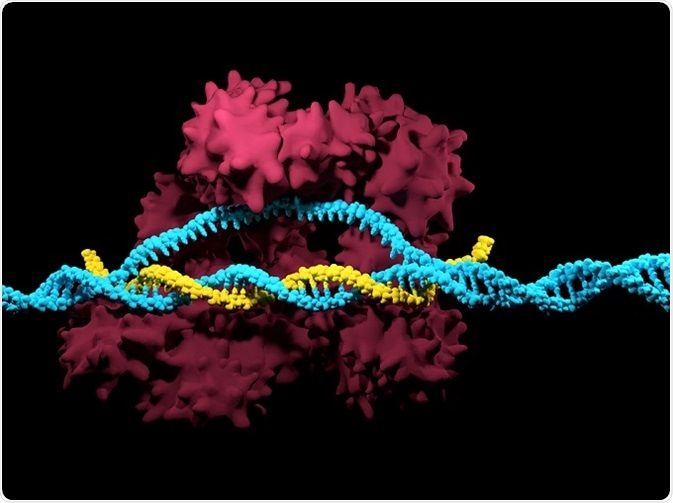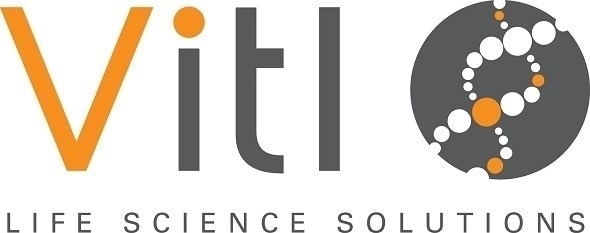CRISPR technology burst onto the scene in 2012,1 and has been a staple of scientific research ever since. CRISPR offers the promise of personalized medicine on a level previously unattainable, and clinical trials are already underway using the technology in China.
As with many new technologies, adoption can sometimes precede understanding. Many aspects of the CRISPR technique require careful thought and execution to achieve the desired result. For instance, researchers may not be aware of the critical importance of maintaining the correct temperature throughout the process of sample preparation and transfection when using CRISPR.

Credit: Meletios/Shutterstock.com
What exactly is CRISPR and how does it work?
CRISPR stands for Clustered Regularly Interspaced Short Palindromic Repeats, and is a gene editing tool that allows for extremely precise changes to be made within DNA. It can be used in all life forms, from bacteria to humans.
CRISPR works by employing CRISPR associated protein 9 (Cas9), which recognizes CRISPR sequences to bind to a guide RNA and acts as ‘molecular scissors’ to cut the DNA at a desired location. This allows the addition of a desired piece of DNA in place of the original sequence.
The specificity of CRISPR/Cas9 offers significant improvement over previously existing techniques, and thus adoption of this technique has been rapid and widespread.
Promise and Controversy
Scientists around the world are hard at work to find new ways to employ this technology in the treatment of diseases ranging from birth defects to dementia. A trial testing the safety of CRISPR in humans will soon begin in the United States as well, being undertaken by researchers at the University of Pennsylvania.2
However, there is significant controversy in this field as well. Many researchers are concerned that the technology is still too new to be used in humans, with potential long-term consequences and adverse events still unknown. Others worry about the ethical issues surrounding the alteration of genes in unborn children.
The original inventors of CRISPR caution against potential unethical future uses of CRISPR and propose a meeting of between a “globally representative group of developers and users of genome engineering technology and experts in genetics, law, and bioethics, as well as members of the scientific community, the public, and relevant government agencies and interest groups, to further consider these important issues, and where appropriate, recommend policies.”3
The direct use of CRISPR in human cells has captured the imagination of the masses. We dream of a day when CRISPR cures HIV, Alzheimer’s disease, and even aging itself. We worry about the slippery slope of prenatal CRISPR use, wondering where the line is between medicine and eugenics. However, CRISPR offers many indirect potential benefits to human health as well.
The use of CRISPR in cell culture and animal models has already improved basic research and preclinical drug discovery efforts. The vast majority of clinical trials fail due to toxicity or lack of efficacy, even when mice given the drug showed significant improvement without toxicity. This is due to the differences between species and is a key hurdle in the preclinical use of animal models.
As CRISPR technology matures, far more accurate animal and cell models of human disease will be developed, with which more effective treatments can be found. In addition, CRISPR can be used in plants to generate crops that are healthier, produce greater yield, and are more resistant to pests without the need for antibiotics.
The Value of Consistency
The scientific community has been described as being in a “reproducibility crisis”, as papers come out exposing significant difficulty in reproducing published data, and researchers report their own problems in reproducing the findings of their peers.4,5
This issue casts doubt upon the entire scientific community, eroding the public’s trust in new discoveries and treatments. It also slows research progress as scientists may doubt the validity of studies on which their own research is based.
The primary reason that data is often difficult to reproduce is differences in reagents and protocols between research groups. Even within the same lab, different researchers can fail to replicate each other’s data. By standardizing and documenting as many variables as possible within a protocol, significant improvements can be achieved.
Innovation Solutions
Companies such as Vitl Life Science Solutions offer innovation opportunities to reduce temperature variability, both within an experiment, and across experiments. Products such as the Ther-Mix and Intelligent Heating Modules offer precise and reproducible temperature settings with programmable and easy-to-use interfaces that allow scientists to create specific presets for their experiments.
By using these Vitl technologies, researchers can eliminate the primary cause of errors in reproducibility, and improve transfection efficiency, while performing CRISPR. Vitl products will help scientists push us toward the golden age of medicine using CRISPR/Cas9.
Dr Helen Bennett reviews the Vitl Ther-Mix
References
- Cong, L., Ran, F.A., Cox, D., Lin, S., Barretto, R., Habib, N., Hsu, P.D., Wu, X., Jiang, W., Marraffini, L.A., et al. (2013). Multiplex genome engineering using CRISPR/Cas systems. Science 339, 819–823.
- S Reardon. First CRISPR clinical trial gets green light from US panel. Nature News. Nature Publishing Group. June 2016. http://www.nature.com/news/first-crispr-clinical-trial-gets-green-light-from-us-panel-1.20137.
- Baltimore D, Berg P, Botchan M, et al. A prudent path forward for genomic engineering and germline gene modification. Science. 2015;348:36-38. doi:10.1126/science.aab1028.
- Baker, Monya. "1,500 Scientists Lift the Lid on Reproducibility." Nature News. Nature Publishing Group. May, 2016.
- The Open Science Collaboration. "Estimating the Reproducibility of Psychological Science." Science 349.6251 (2015).

About Vitl Life Science Solutions
Vitl designs, manufactures and sells high quality laboratory instruments to compete with market leaders at an affordable price with unrivalled functionality, usability and style.
The growing Vitl laboratory products range includes the world’s best-selling microplate heat sealer- the VTS and its compact counterpart the MicroTS. Vitl also sell a range of foil and film heat seals as well as microtube pickers and programmable mixers and vortexers.
Vitl products was established in 2006 by the medical, diagnostic and analytical device design and manufacturing company Integrated Technologies Ltd.
As a member of the ITL group, Vitl benefits from the experience and expertise of a parent company that works with globally successful medical devices and laboratory instrumentation.
Vitl products are sold through a global network of distributors and OEM (private label) partners, managed by their main sales offices in the UK, USA and China.
Sponsored Content Policy: News-Medical.net publishes articles and related content that may be derived from sources where we have existing commercial relationships, provided such content adds value to the core editorial ethos of News-Medical.Net which is to educate and inform site visitors interested in medical research, science, medical devices and treatments.